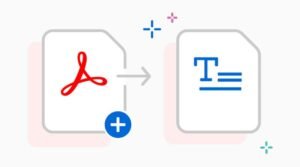Highlighting Duplicate Values in Excel: A How-To Guide

If you work with spreadsheets and you want to highlight duplicate values, it’s easy to do in Excel—but it’s also easy to mess up the formula and end up highlighting the wrong thing! For example, say you want to highlight the duplicate values of all red data in your spreadsheet. You could use this formula: =IF(A1=,INDEX(column name,MATCH(A1,column name,0)),) . The problem? If there aren’t any duplicate values, your spreadsheet will display a blank cell instead of the value you want it to have.
Why you should care about duplicates
Too much data is a common problem and duplicates only exacerbate the issue. Not only do they take up valuable space, but they can also lead to inaccuracies and confusion. When you’re working with data, it’s important to be able to identify and remove duplicate values so that you can be confident in the accuracy of your information. As long as you know how to highlight duplicate values in Excel, you’ll have an easy time sorting through your data. Here are five steps for highlighting duplicates:
-Open an Excel workbook containing the data set you want to analyze (or use any open workbook).
-Choose Data > Sort & Filter > Highlight Duplicates or go directly to Data > Find & Select > Highlight Duplicses from the top menu bar. Click on Duplicate values next to Select All. Click on OK to start.
Finding the first match of a value
To find the first match of a value, you can use the INDEX and MATCH functions. The INDEX function returns a value from an array, and the MATCH function returns the position of a value in an array. By combining these two functions, you can look up a value and return its position. If that same value is found at or below the returned position, then it is not a duplicate; if it is not found at or below the returned position, then it is a duplicate. For example, to check for duplicates in a list of names sorted alphabetically by last name: =INDEX(A2:A8, MATCH(Smith,$A$2:$A$8))
Identifying additional matches
To find additional matches, click on the Data tab and then select Remove Duplicates. In the Remove Duplicates dialog box, select the range of cells that you want to check for duplicates. Make sure that the My data has headers option is selected and then click OK.
A new dialog box will appear asking you which columns you want to remove duplicates from. Select the column or columns that contain the values you want to check for duplicates and click OK. The next step will be to highlight duplicate rows in a different color. Once again, this can be done by clicking on the Home tab and selecting Conditional Formatting > Highlight Cells Rules > Duplicate Values. Now choose your preferred color (you can also apply an icon) before clicking OK.
The last step is to add a title so people know what they are looking at when they view the sheet.
Removing duplicates from an entire column
To remove duplicates from an entire column, you can use the Remove Duplicates feature in Excel. To do this, select the column that you want to remove duplicates from. Then, go to the Data tab and click Remove Duplicates. In the Remove Duplicates dialogue box, make sure that only the column you selected is checked and then click OK. This will remove all duplicate values from your column. If you have any data on either side of a duplicate value, it will be removed as well.
For example, if I have John Smith 1/5/18, John Smith 2/5/18, and John Smith 3/5/18 in my data; after removing duplicates I would end up with just one instance of John Smith (1/5/18). You may notice that some rows are left blank because they don’t contain a duplicate value. It’s worth noting that if you’re dealing with thousands or millions of rows, using this method may take some time. However, it’s still faster than deleting every row individually!
Removing duplicates from a selected range
To remove duplicates from a selected range, follow these steps:
- Select the range of cells that you want to check for duplicates.
- On the Home tab, in the Styles group, click Conditional Formatting.
- Click Highlight Cell Rules, and then click Duplicate Values.
- In the Duplicate Values dialogue box, click OK.






